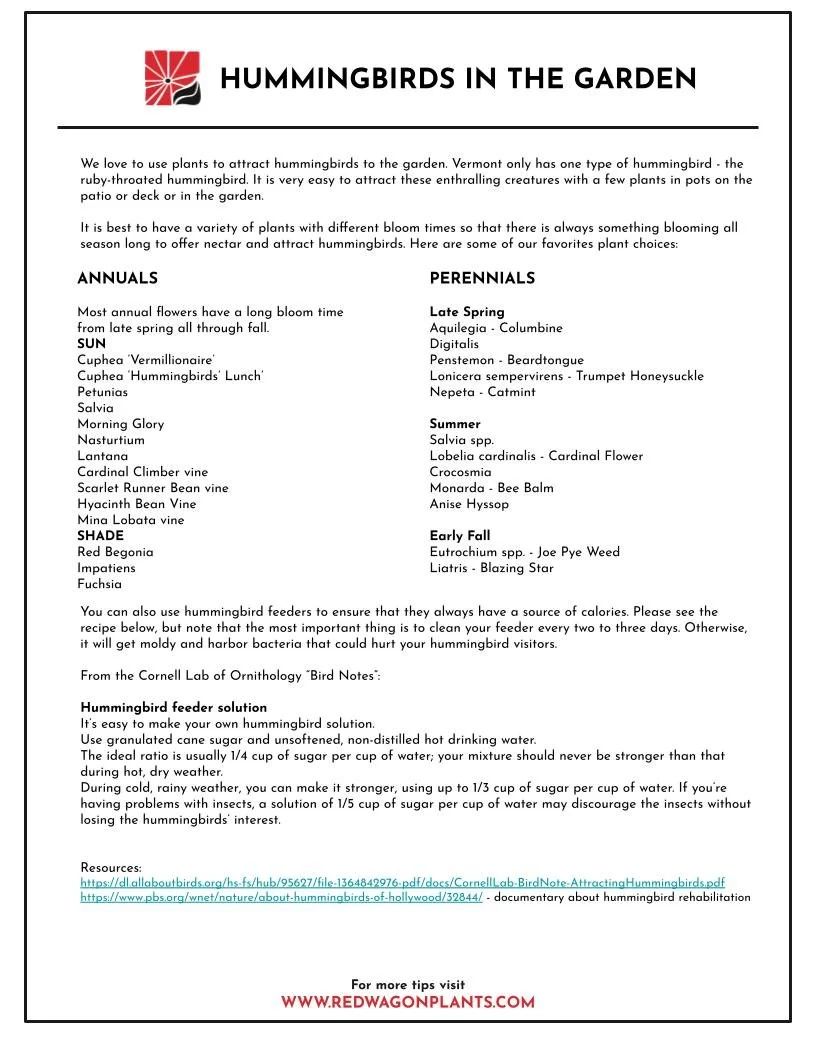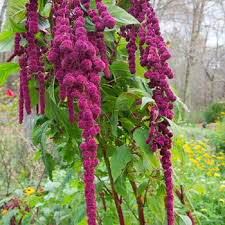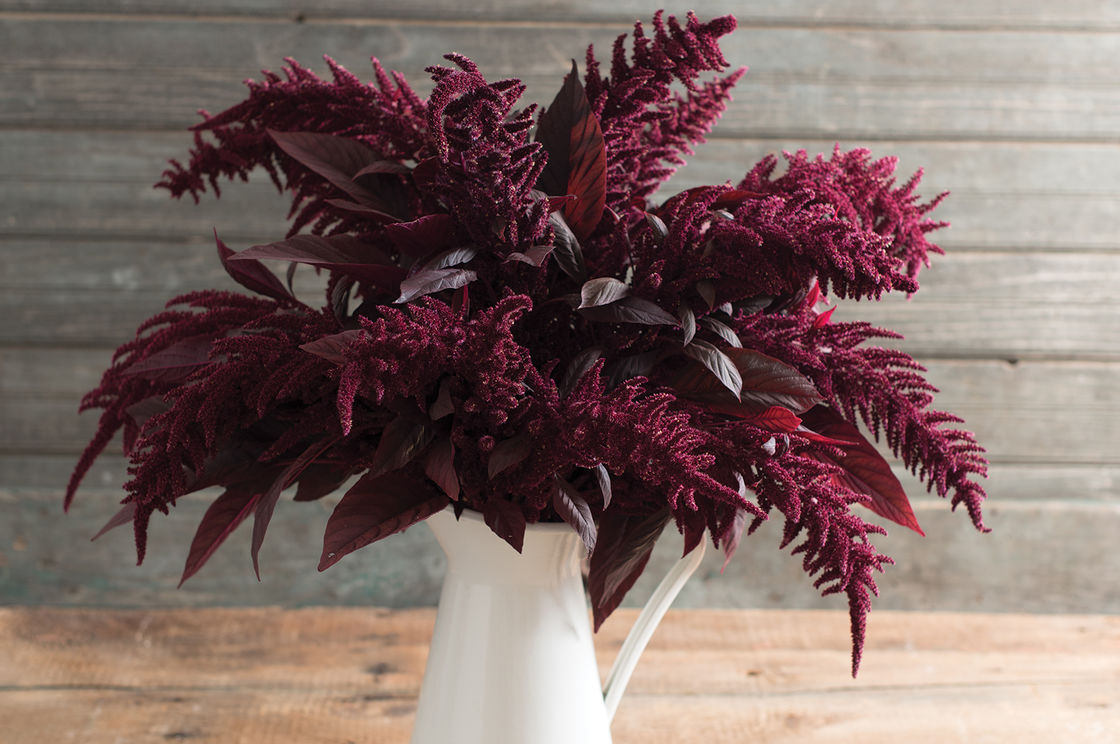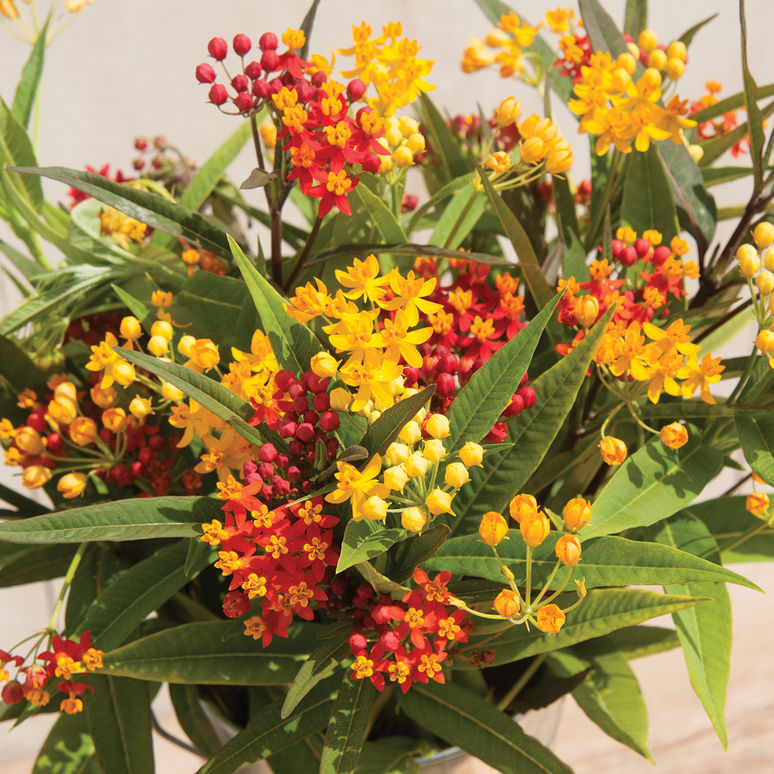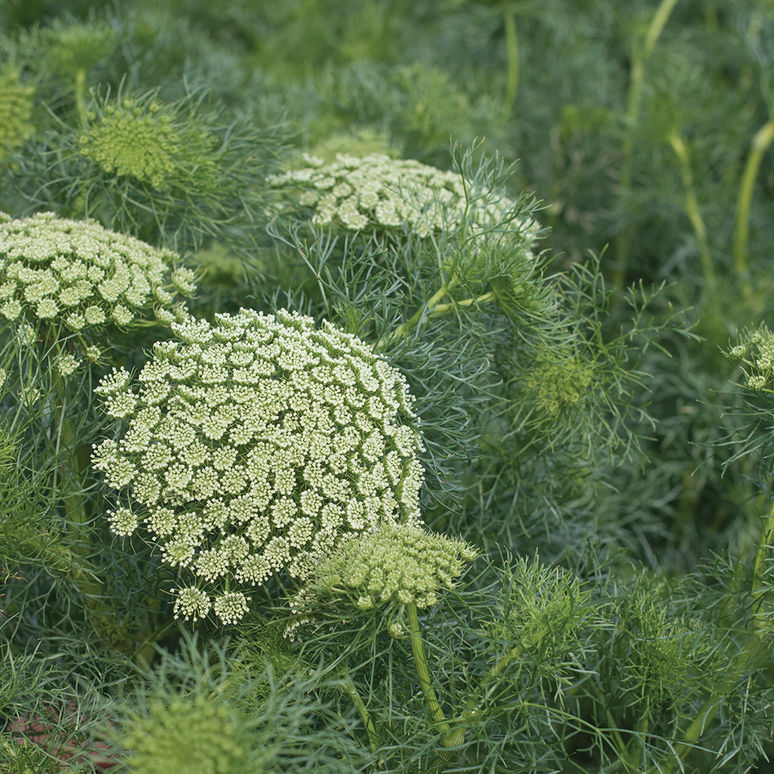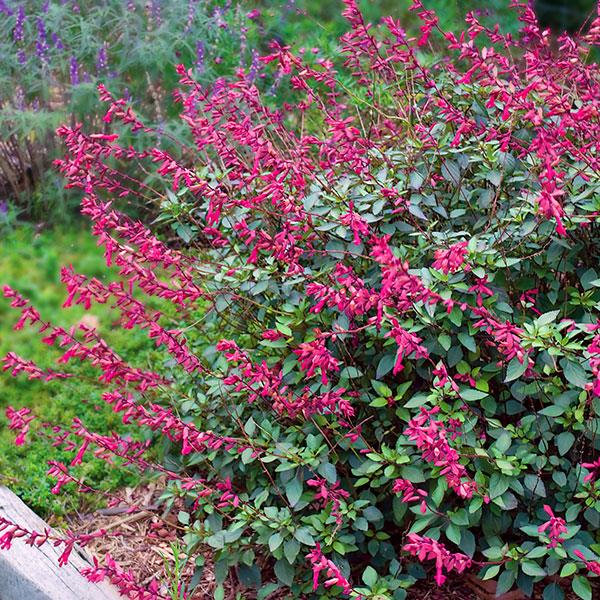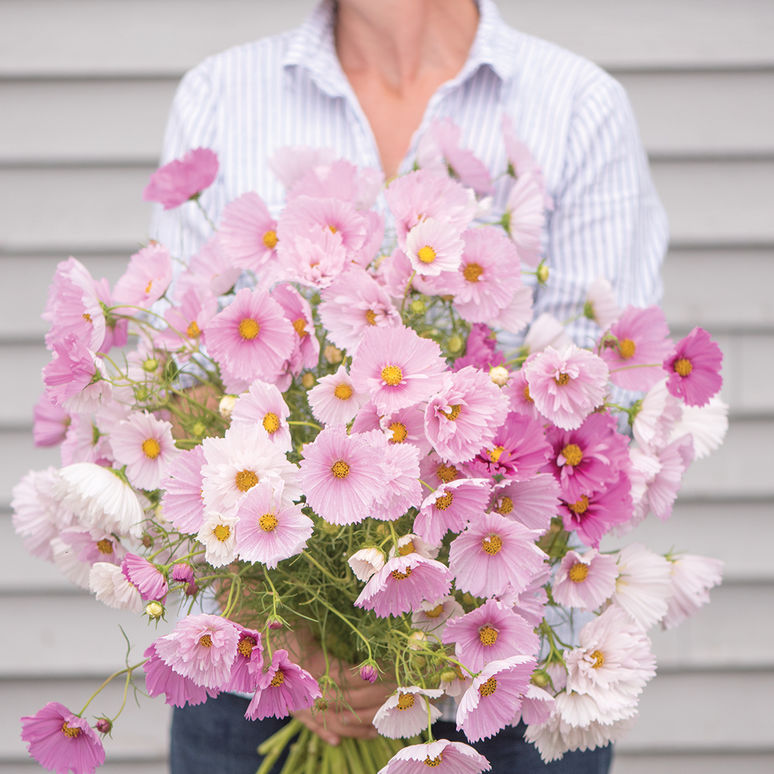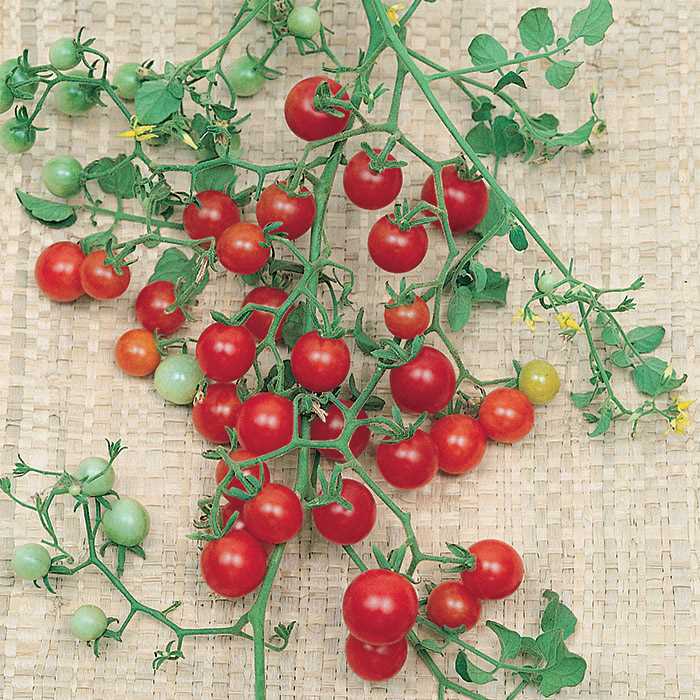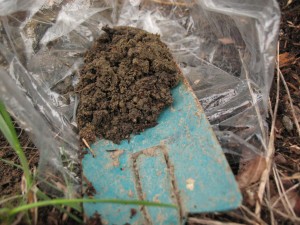Succession Gardening for Success
Garden Planning for the Seasonal Kitchen
Growing vegetables in your backyard, community garden or in containers by the kitchen door is a great way to feed yourself - whether it be just a few ripe tomatoes in August or a full-fledged homesteader's garden, you are on the path to feeding yourself and your family. Gardening is a great way to improve how you eat while spending some contemplative time outside. With all of these benefits in mind, it is easy to jump into gardening enthusiastically, and you will reap even more rewards with a little bit of planning. In Vermont, our gardening season seems short but can be stretched almost year round with a few simple tips. I always recommend that people take a look at how their vegetable gardens have been in the past and find just one or two things they would like to improve so that they can grow more of it for a longer season. For example a common question I hear is "how can I keep cilantro from bolting?" Well, in short, you can't. But with a few changes in your gardening practices, you can grow it all spring, summer, and fall without ever seeing it go to seed. The trick is to understand the life cycle of each vegetable or herb and how to best plant it to maximize its harvest. With certain crops, like zucchini, it is best to understand how prolific they are and to plant them conservatively so that the entire garden (and thereby your diet and your neighbors' diet) is not taken over with just one thing. It is also helpful to plant things seasonally so that the harvest is not so overwhelming in August with little to eat before or after. Or sometimes we just want fresh salads all summer, but don't replant and are left salad-less after July 1st.
Succession Planting for Successful Gardening
Certain crops should be planted multiple times throughout the season to ensure a continuous harvest. This is called succession planting. How often you plant is a matter of taste and space and time. The following list describes the maximum you could do with each crop, but adjust according to your needs and priorities - this is just a guide. If you want to make sure you have a certain vegetable all summer long, then you can follow the guidelines. If you want it a little less, then create your own modified planting schedule.
Lettuce can be grown from seed or from transplants. Seed grown lettuce is often grown in a row that can be cut and will re-grow a few times - think of mesclun. Transplanted lettuce can be grown to produce full heads like what you find in the store. Both methods require regular planting every week or two for a continuous harvest. It can be planted from seed in mid-April to mid-August for cut greens and transplanted for full heads from late April / early May through early August. Some people will transplant a few plants and plant some seeds at the same time in a different area; this method provides two generations of lettuce and two types of salad greens. Once the cut lettuce becomes bitter in the heat of summer, it is best to pull it up, recondition the soil with compost, and plant something else. If the goal is to always have fresh lettuce, it is very simple to do if you remember to replant it. You can even purchase a number of plants and hold some in their pots in a shady spot and only plant out a few each week. You can seed it yourself in trays or pots and follow this same method. Having several varieties, cold-tolerant ones for spring and fall plantings, and heat-tolerant ones for mid-summer, will produce the best flavor.
Cilantro is very similar to lettuce in its growing habits. It will grow up to a point and then goes to seed, called bolting. It will bolt more quickly in summer heat and, conversely, will stand ready to harvest for many weeks in the cool weather of fall - even early winter. It is good to time plantings so that cilantro is ready to harvest before June 21 (the solstice), and then plant more afterward. It can be transplanted or grown from seed. Like lettuce, it is simple to do both at the same time, thereby giving the gardener two generations. Cilantro seed is coriander, so it does have a use if you enjoy that flavor. There is nothing you can do to prevent cilantro from bolting entirely, but you can slow the process down by placing your mid-summer plantings in a partly-shady spot.
Dill can be treated just like cilantro, and, like coriander seed, dill seed heads have a use in the kitchen, so it is fine to let some of the dill patch go to seed. The seed heads can be used in pickles. you can also let them self-sow or save the fully dried seeds in a paper bag for replanting.
Basil can be planted multiple times for best results. Plants can be pinched to slow down the flowering, but best flavor will come from newly replanted basil plants. This is a heat loving plant. Should only be planted once soil temps are in the upper 50's - usually last week in May or first week in June. Basil's flavor is at its peak right before it starts to make flowers.
Cucumbers, cantaloupes, and zucchini and summer squash are best in quality when well tended. Just a single plant or two of any of those is usually enough for the home gardener, but by planting it two to three different times, spaced out, the quality will always be good. The dates are: June 1st (or last week in May if you are in a warm spot), July 1st and July 15th. This method will ensure a continuous harvest of prime looking vegetables. Just remember to pull out and discard the pest- and disease-prone older plants. If your compost gets very hot and is well managed, it is okay to compost these plants. Pest problems will diminish when the older, less healthy plants are removed. And you can use that opened up space for a quick growing crop like, lettuce, herbs, scallions, greens or fennel.
Arugula, mustards and other cutting greens for salads are best if sown or transplanted on a weekly or biweekly basis. Again, a small amount can be seeded next to the transplanted crops in order to give you 2 generations at once. This way you can have smaller quantities coming in at various times.
Broccoli gives the gardener a couple of options. It is best if transplanted and can be planted over 3 dates in the spring and 3 dates in late summer for a continuous harvest. I would choose late April, early May and mid May for the spring plantings and then Early August, mid August and early September for the fall plantings. Full heads can be harvested and the plants can stay in the ground to produce side shoots.
Green Beans are best when fresh and young. The seed is relatively cheap, so it is better to rip out old plants and have new ones coming along regularly. Having smaller, multiple plantings also means that no on is stuck picking beans for hours on end. Sow new seeds when the previous or first generation is about 6 inches high.
Boc Choi, Cabbage, and Cauliflower can also be planted multiple times. Cabbage holds well in the heat and can be planted every couple of weeks late April through early August. Boc Choi and Cauliflower are not as heat tolerant and should be planted around the same dates as broccoli (see above). It is best to use row cover like Reemay on these young transplants so that flea beetles do not destroy the plants.
Spinach is another one that does not do well in the heat, but can be planted multiple times in spring and late summer. It can also overwinter with a little straw mulch for very early spring eating. Frequency of planting can happen every week mid April to early June and then early August to mid September. The last plantings in September are the ones which will be over-wintered and eaten the following spring. Apply straw mulch on overwintering spinach in December once the ground is frozen.
Beets, Carrots, Turnips can be planted from seed every two or three weeks from mid-April until about the third week in July. Summer carrots are not the same as fall carrots and certain varieties do better in summer than in fall. The flavor of fall carrots is much sweeter, so I usually plant a larger patch in the fall. Fall carrots can also be stored all winter without going bad due to their lower moisture content. I don't love summer carrots, so I often skip those. Remember, it is all about what you like to eat.
Celery and Celeriac are slower growing and can be transplanted 1 to 3 times during the season, from mid May until early July. These need lots of water and benefit from straw mulch to hold the moisture evenly around the roots.
Bulb Fennel and radishes are similar to lettuce - they can be planted each week if really loved, but they bolt in the heat and do best in the cooler temperatures of spring and fall. They are best if planted late April to early June and then again late August to mid September. They are cold tolerant and hold well in late fall. Radishes are grown from seeds and fennel is best transplanted. Fennel also benefits from a straw mulch - even moisture around the roots is what helps it make larger roots.
Corn - it is possible to do multiple plantings over different weeks, but an easier method is to plant all at once, but with various varieties that have different days to maturity. There can be a 40 day span between early and late varieties.
Peas can be planted every week, but this requires a lot of harvesting, irrigating, trellising, and variety research. It is possible though. More practically, the home gardener can sow 2 or 3 varieties in late April with various days to maturity. Fall plantings are sometimes successful but are weather-dependent. These should be done in mid August.
The following are generally planted just once a year, but the harvest can be staggered with a few tricks:
Tomatoes, Peppers, Eggplant - try a few varieties of each in order to not have everything at once. Determinate tomatoes will provide you with a big harvest all at once which is a good thing for people who make big batches of sauce for canning or freezing. Determinate tomatoes are the ones that grow until a certain height and then mature all at once. Indeterminate tomatoes are the ones that grow indefinitely until the frost and the fruit ripens gradually August until frost or disease kills the plant.
Peppers and eggplant are best if transplanted in early June once the soil warms up. One planting is usually plenty, but again an assortment of varieties will keep the harvest varied, staggered and interesting.
Onions and Potatoes are generally planted all at once, and again a few different varieties will provide you with a longer period of fresh eating. Both onions and potatoes can be stored for long periods of time in cool and dark conditions. Both can also be eaten fresh as young, green onions or new potatoes. Both can be harvested, cured, and stored for eating year round, though some onion varieties store much longer than others.
Winter Squash is another crop that is planted just once and can be stored. It is best cured for a week or two in a warm spot before eating.
Watermelons are usually planted just once in the home garden (early June is best). Cantaloupes can be planted as late as early July.
Open Spots
When you harvest a crop and create an open spot in the garden, take advantage of that spot with any of the quick growing crops that you like to eat. Some easy ones to try from transplants:
arugula
baby boc choi
fennel
lettuce
mustard greens
scallions
kale
chard
beets
herbs - pretty much any herb can be planted up until early August. Cilantro, dill, parsley, chervil are all cold tolerant and can be planted as late as mid-September from plants (mid August to late from seeds)
You can also tuck in flowers that grow vertically and don’t take up too much room:
cosmos
verbena bonariensis
lisianthus
calendula
poppies
From seed, you can try:
carrots
beets
radish
asian greens
mustard greens
lettuce
bush beans
2018 Plant List Preview: Cut Flowers
Last year was the year of the cut flower program at Red Wagon. Not only did we grow and sell more cut flower varieties than ever before, but we also hosted a 3 part floral design workshop series with flower farmer / florist Nina Foster and had a chance to meet flower growers from Vermont, New Hampshire and Massachusetts. The fun and beauty continue into 2018 with an expanded offering of varieties that work well for cutting and arranging and crafting. Here is the list. If you are a home gardener, you can make a wish list now for summer dreaming and planning. If you are a commercial grower, feel free to contact us about purchase plants in larger quantities for your commercial operation. The photos below represent only about 1/3 of the plants we grow that are suitable for cut flower use. Most of our perennials and many more annuals and some herbs are also suitable for floral use. And please note that vegetables and berries can make unique and eye catching additions to those sprawling, romantic bouquets that are so in style right now. If you need any suggestions or want to make a special request, please don't hesitate to let us know.
Photo gratefully used with permission from Ball Horticultural and Johnny's Selected Seeds.
How to Get Your Soil Tested
Here's one of our most popular posts from the archives. If you are a new gardener or gardening in a new spot, it's well worth it to get your soil tested to ensure happy plants and bountiful harvests.
I've always thought that getting your soil tested was going to be somehow difficult and arcane. But I've had some challenges growing things since moving here (namely like a non-blooming hydrangea). So since Julie said it's a good idea, I've decided to give it a try. I visited the UVM Extension Service website.
And downloaded this form to fill out.
And scooped some dirt into a bag.
Julie adds:
It's best to take samples from multiple places, digging in the first 6" of soil, mix up the various handfuls of soilin a bucket, and select your soil test sample from this mixture. It gives the soil test people a better idea of the overall make-up of your soil. Make sure the bucket and spade are very, very clean.
Tomorrow I'll send the dirt and $18 to UVM. And in 10 - 14 days I'll get back a recommendation of what I should add to my soil to grow what what we're planning.
In the meantime, I'm watching as the plants blossom, and unfurl, and grow.
Beautiful RWP pansy.
The last day of last year's inedible sorrel. Tomorrow I'm ripping it out to make room for the currant bushes when they come, and will throw the leaves into a Greek-flavored braise I'm making.
The wings that feed
Much like our plants at Red Wagon, us humans need nourishing food and water to stay healthy and alive. That’s why we love selling plants to gardeners; so they can grow their own food and cultivate their own nourishment. Too often, though, we forget about one of the most important keys to our nourishment: pollination. Pollination is what allows us to grow fruits and vegetables. And, while it seems hyperbolic to say, it is true that a world without pollinators is a world without food. Many of us are learning more about the issues pesticides create for pollinators, but it is less known just how precisely important pollinators are to our food system. An article published by the Pollinator Stewardship Council titled, “Ecosystem Service of Pollinators” pointed out that one study assigned “an economic value to the ‘ecosystem services’ provided by pollinators at approximately $167 billion”. The study also pointed out that pollinators not only affect the quantities of food produced, but they “may also have a beneficial impact on nutritional security-the availability of essential macro-and micronutrients in the human diet”. One study focusing on the nutritional benefits pollinators have on produce found that cross-pollinated almonds had a higher ratio of oleic to linoleic acids-a desirable “cardioprotective” quality for consumers. Another study sited showed that “bee-pollinated strawberries were more red, were heavier and firmer and had reduced sugar-acid ratios,” which proved to have higher market value and were healthier for consumers". So, while these studies are new and we still need more information, it is unarguable that pollinators are the lifeblood of our food system. And, we should take care of them as they take such good care of us.
Garlic Ritual
Planting garlic in Vermont is a great way to extend the gardening season and gives you a crop that is perfect in so many dishes, stores well all winter long and even generates its own seed. It is a perfect way to tune into the cycles of the gardening season and feel like you are growing an important part of your diet. Garlic is expensive to purchase so there are savings to be had with your own garlic crop. Please follow this guide for easy, step-by-step instructions that will give you a garlic patch for life. I have been growing out my own garlic for 18 years and usually do not need to ever buy seed stock or garlic in the grocery store. The pleasures of garlic growing are abundant and I encourage you to get familiar with this wonderful and simple crop.
When to start the cycle?
Planting dates in Vermont are anytime between mid October and late October. It is best to wait until then, because if you plant too early, the bulbs will break out of dormancy too soon and this weakens the plant going into our harsh winters. If you plant the cloves during those last two weeks of October, it gives them just the right amount of time to take root and hunker down until spring, but not send out any top growth.
To plant garlic, you need to follow a few easy steps.
1. Bed preparation.
This is the act of making your garden soil ready for garlic planting. You want a nice patch of garden, that is worked deeply so that the soil is loose about a foot down in depth. If your garden is very compacted and hard, the garlic will not be able to grow well and you will be sure to end up with small heads of garlic that are tedious to peel and not all that satisfying. You can prepare the bed with a 3 prong fork by digging in straight down, tilting the handle of the fork back and forth, and loosening the hard pan. This is a good work out! Don’t hesitate to get dirty here by kneeling in the earth and breaking up the clods of soil with your hands so they are not chunky at all. Add a bit of well rotted manure or compost at this time. Not too much. For a 5 by 10 bed, maybe a 5 gallon bucket’s worth. You don’t want to over feed the garlic roots in the fall, but a little compost will add organic matter and that will help the structure of the soil, keeping it loose, able to retain some moisture without staying too wet.
Take your time and your garden will reward you. I always look at garlic planting as a soulful moment in the gardening cycle. It is saying goodbye to summer and embracing the dormancy of winter, when seeds deep below the surface slowly get ready for their spring emergence. Living in a climate with such long winters, I need these small, but important, rituals to remind me that spring will come and the cold barren winter is a necessary part of it all. The seed garlic is planted in the fall because it needs to send roots far into the earth in order to feed itself the following year. I take this as a metaphor for my own winter activities that feed me all year long - catching up on sleep, feeding my mind with more reading time, eating great, nourishing foods, and spending more time with friends and family. I digress here, but these are the thoughts I have as I plant garlic, and after many years of doing it, I find that it is a necessary part of my mental preparation for winter.
2. Mark the rows with a hoe, or hand tool. I usually keep the rows about 12 inches apart and since my beds are about 4 feet wide, I keep 3 rows per bed and can easily reach the center. Just drag your tool - the sharp tip of a hoe or the narrow edge of a hard rake works well - through the soil to delineate the rows. You can use string and stakes if it is important to be straight, but I don’t bother with that at all.
3. Break up the garlic heads into individual cloves. Do not peel! And notice that one end is the root end and one end is the stem end. This will be important for planting right side up with the root end pointing straight down and the stem end pointing straight up.
4. Space out the cloves. Lay the cloves on the top of the soil, following the line you have just drawn in the soil. Allow about 6 inches between all the cloves.
5. Planting, spacing, and yields
Now you can start to plant. I always kneel down and take my time to feel the earth under me at this point. It just feels good and is a way to say goodbye to the garden before winter! Then, take a bulb planting tool, or a sturdy, sharp pointed stick, or your hand if your soil is soft and pliable, and poke a hole about 4 to 6 inches down. Shove the clove of garlic deep down, root end down, and cover up with the soil. Continue down the row and repeat until all is planted. Three heads of garlic will turn into about 24 heads next spring - assuming your garlic has about 8 cloves per head. . And with 6” by 12” spacing, a 5’ x 10’ patch of garlic will yield about 60 heads of garlic. That is enough to enjoy one head of garlic per week, all year long, and still have some left over for planting. To plant a patch this big, you will need to plant the equivalent of 7 to 10 heads of garlic.
6. Compost and mulch. I usually add another 4” of compost or well rotted horse manure to the bed. I then leave it like that for about 6 weeks. Then in mid to late December, I cover the bed with a thick layer of straw. You can also use leaves here, but straw is the best insulator with hollow stems that trap air and keep everybody warm down below. Another advantage of straw is that it usually does not have weed seeds in it; mulch hay, straw’s poor cousin, should be avoided since it is laden with all sorts of perennial grass and weed seeds. The straw moderates the winter soil temperature and prevents buckling and heaving which could push those garlic cloves up and out of the ground.
Let winter pass you by now, and next......
7. Spring time chores with garlic. Once the snow melts and the soil warms up a bit, your garlic will break dormancy and magically pop up out of the earth. It is important to pull back the straw to let the garlic see sunlight. If you wait a bit too long, and pull back the straw only to see a bunch of yellowing stems, don’t worry! The garlic shoots will green up in no time and will look fabulously sturdy after a week or so of direct sunlight. I usually pull the straw into the garden path, let it pile up there and then replace it around the growing garlic to block out weeds once the garlic plants are about 8 inches high. I often will add a little granular fertilizer at this time, before putting the mulch back in place. For a 5 by 10 garlic patch about 3 cups of Pro-Gro from North Country organics or one bag of Compost Plus from Vermont Compost Company is just about right. This will insure you get large, easy to peel cloves that taste great.
8. Garlic scapes will appear on stiff neck garlic around late May. These look like green curly cues with a pointy end that gracefully swoops down and around, waving in the breeze. This is the budding and flowering portion of the garlic plant. It should be removed to help the plant spend its energy on sizing up the goods below ground. If it is allowed to flower, the plants’ strength will go towards the flower and the garlic forming below ground will be the weaker for it. The good news here is that the “scapes” as they are called, are good to eat. I usually cut off the pointy tip - it is rubbery and inedible, and then slice up the round stem and use it in stir fries, stews, pasta dishes, or pickles. When cooked, it has the texture of a nice green bean and the flavor of mild garlic. It is absolutely delicious and a once a year treat that marks the beginning of summer - a harbinger of good things to come.
9. When to harvest? Garlic is ready to harvest when about 70% of its leaves have turned yellow. This is somewhat subjective, and should be taken as not a hard and fast rule, but rather a guide. You can dig up one head of garlic and look for signs of well formed skin, plump cloves, and individuation (cloves that are individually formed, and not one big mass). This is usually some time in late July. In very wet and rainy years, sometimes it makes more sense to take the garlic our of the ground a little early so that the skin does not rot in the damp earth.
10. How to harvest? Take out your three prong fork again and use it to loosen the soil around the outside edges of each garlic row. This will break up the soil enough to allow you to pull out each plant with a firm yank. (If the stems break off, it is likely you waited too long and the skin and stems are starting to rot. At that point, just dig up the cloves with a spade and they will be okay in taste; they just won’t store well. ) Lay the plants on the surface of the soil so that they start to dry off. Once all the garlic is pulled up, wipe it with a towel or rag, and get ready to tie it into bundles. I usually take about 8 plants, hold them together in one hand, and with the other hand, wrap twine around the whole bundle. Tie off the twine and then hang the bundle in a dark airy space. The rafters of a garage, shed or barn work well. If you don’t have that type of space, just find a place out of the rain, out of direct sunlight and with good air circulation - a covered porch? a dry basement with a fan running? a spare bedroom that can get a little dirty? (no shag rugs please!).
11. Curing the garlic Curing is the process of letting the garlic dry which makes the papery skin that allows the garlic to keep all winter. The stems will turn brown and brittle and the exterior of the bulbs will become dry and paper-like, just like garlic in the store. At this point, it is okay to cut off those dry stems, wipe off any remaining dirt, cut off the roots, and place your garlic in a crate to store it. This can be done anytime from 3 to 6 weeks after you initially hang up the garlic to dry.
12. Storing the garlic Once the garlic is cured, cleaned and trimmed, you are ready to store it for eating all winter long. Garlic is best stored in the dark. In an airy, dry, cool place. I use milk crates, covered with a piece of burlap, and keep the crate in a very cool part of the basement. Ideal garlic storing temperatures are between 35 and 45 degrees, but a refrigerator is too humid, so please don’t be tempted to use that as a storage method. Other good places to store garlic (and onions for that matter) are unheated attics, attached garages that don’t freeze, but are not heated, or 3 season porches that do not freeze. Root cellars are great, but most of us don’t have one. If well stored, garlic will last until April or May - almost right in time for the garlic scape harvest!
13. Finding seed stock.
Until you build up your own supplies, you will have to purchase seed garlic. There are many great resources for garlic and for finding garlic seed, I recommend Johnny’s Selected Seeds, or locally, Last Resort Farm in Monkton, Hudak Farm in Saint Albans, or any farmer at your local farmers market who has nice looking seed stock. Seed stock is basically sorted out of the garlic harvest and selected for the following the following traits:
- good size
- evenly formed cloves
- strong stem
- well formed skin
- great flavor
- ability to store for a long time
If you have been growing out your garlic in your garden, you can pick out the best cloves at cleaning and storing time. Set these aside in a safe place where they will not be eaten and come October, experience the joy of planting your own seed garlic.
14. Plant garlic. Repeat Step 1. above and the cycle starts all over again!
Mini Raised Bed Greenhouses for Sale
Look at these great greenhouses Eric Denice has built. We are offering four of them for sale this spring. And can deliver them to you, too. We have used the same materials that go into our production greenhouses...6 mil plastic, hoops bent at just the right angle to shed water and snow, polycarbonate end walls, wiggle wire and extruded metal track for securing the plastic closed, and pipes that act as a "brake" for keeping the sides just where you want them. We are happy to give you a demo....or come and peek at ours that is all planted and growing along nicely.
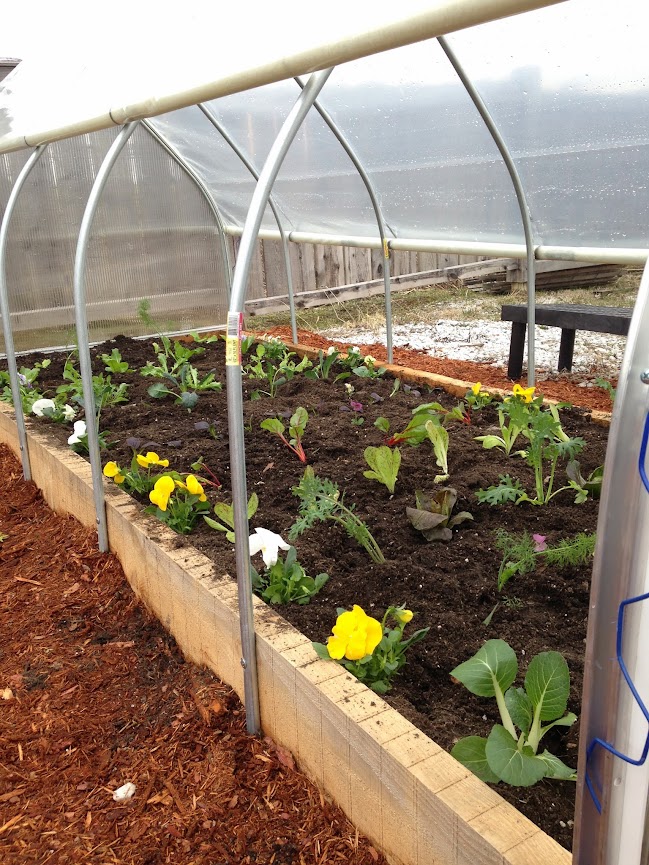
You can roll up the sides, you can close it securely and easily, or even take the plastic all the way off once the weather warms up. The frame can act as part of a trellis system for tomatoes giving them a warm and dry environment as they size up, and then you can take the plastic all the way off and let them grow through the top of the frame. Just add a few horizontal lines of twine and, voila, instant tomato trellis!

Plants are nicely tucked in and cozy warm, no matter what the weather! You can easily get a 2 to 3 week jump on the season with this kind of season extension. The raised bed means that the soil is dry and warm long before garden beds, and the tight, plastic cover gives you warmth on cold nights. You can keep the sides rolled down on chilly, cloudy days, but it is best to roll them up a bit in the morning. It can get quite warm in there when the sun pops out. This type of greenhouse will allow you to harvest greens almost year round. It can also be used as a spot to start seeds, harden off plants, and gives you an extra zone of warmth if you would like to grow a perennial that is not usually hardy here.

We can deliver, bring you soil, plants, and have your instant garden ready in just an hour or so! Just add water.

Dimensions: 4' by 10'
Base boards are made of 2" by 10" hemlock
Price $425
Gerard's Bread Club
This year we will again be offering a weekly share of Gerard’s Bread!
Gerard Rubaud is Julie’s father and bakes wonderful bread in his wood-fired oven.

He uses a fermentation method that relies on wild (as opposed to commercial) yeast for leavening. The method, traditional in France, involves culturing grains, flour and water to produces a natural starter called levain. He grinds many of his ingredients from whole grains, including rye, spelt and wheat. About a quarter of his dough is comprised of these freshly ground grains, the remainder is white flour. It is simply delicious!
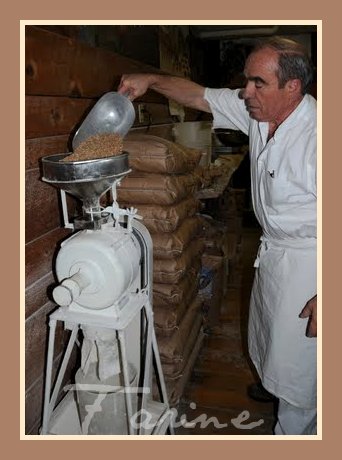
How the Bread Share works:
- Prepay for 12 weeks, from April 19th to July 19th
- Pickups are on Saturday the bread is usually here at Red Wagon by noon.
- It costs $84.00 for the share, ($6 per loaf).
- If you can’t make it on Saturday for pick up we will hold your bread until Sunday evening. Or ask a friend to adopt your loaf!
If you are interested, please send us an email (julie@redwagonplants.com) or send a check made out to Red Wagon Plants to 2408 Shelburne Falls Rd Hinesburg, VT 05461.
Thanks!
Mud Season Salad Club
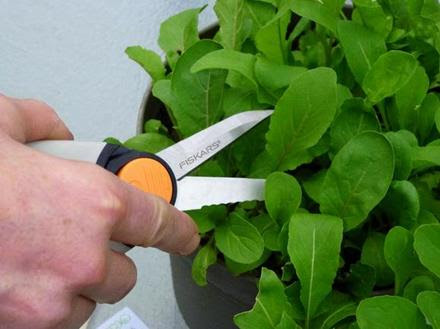
The days are getting longer, and we are all eager for a little fresh food in our diet. Get a jump on spring with lovely living salads. For the month of April alone, we are offering a Mud Season Salad Club. Sign up now and get an assortment of living salad greens each week. The salads come ready to harvest and are planted in easy to carry containers. Take home trays full of luscious, ready to eat greens such as arugula, mache, lettuce, bok choi, pea shoots, sunflower sprouts, and tender herbs. If you would like to be part of this fun salad adventure, send an email to Julie@redwagonplants.com. The best thing about this salad club is that the greens are still alive when you pick them up, and you cut them only when you're ready to eat. No more rotting greens in the fridge! Elevate your salads to the countertop where you can feast on them with all your senses. Here are the details:
Cost: $100 for the month of April and we guarantee enough salad greens for 4 side salads a week for two salad eaters. That comes to about $3.00 a serving for the freshest greens you can find.
Pick up: at our Hinesburg Greenhouses at 2408 Shelburne Falls Road on Friday afternoons between 3 and 6pm. If you cannot make it then, no problem. Just email us and we will set them aside for you. Bring your pots and trays back to us after you have cut the greens. We will compost the soil and use it in our gardens. The first pick up will be Friday, April 4th and the last pick up will be Friday, April 25th.
At home: All you need is room for three trays, about 10" by 20" each. It can be near a window, but that is not absolutely necessary since you will be harvesting them within a week. When you are ready for a salad, just snip the greens at the base with a paring knife or scissors, rinse and dry them, and toss with a very light dressing. We prefer a simple dressing of a good salad oil such as extra-virgin olive oil, hazelnut oil or walnut oil; a squeeze of lemon or splash of sherry vinegar; and a pinch of Maldon sea salt. These greens are so fresh, that you want to be able to really taste them. Keep the bottled dressing for those fridge greens! These are the counter top greens and they deserve top-shelf treatment.
To find out more, email julie@redwagonplants.com
If you are ready to sign up, send a check for $100 to:
Red Wagon Plants
2408 Shelburne Falls Rd
Hinesburg, VT 05461
Thanks so much. Bring in the bounty!
-Julie and the crew
Cabin Fever Gardening
It's the dead of winter and the weather has been...well, let's not even talk about it. The seed catalogs have poured in, they are lying all around the house, tempting us with dreams of future sunshine, dirt under the nails, baskets of produce, and all those things we are deprived of in these short, dark days. Here are a few things I like to do to get through winter. I would love to hear other people's coping strategies, so please share your thoughts on cabin fever gardening. For one thing, meditate. Not necessarily in a formal way, but just sit still. Imagine seeds, roots, and bulbs that are buried deep in the frozen earth. This period of short days is necessary in the life of a plant. It is a time of dormancy and rejuvenation, for plants as well as for humans. Rather than fight the dark days, embrace this as a time of year when you get to slow down, evaluate, and regenerate. I love that, because of my work, my life can follow seasonal rhythms to a certain extent. Winter is when I plan, plot, analyze, and restore.
Next, look for signs of green. As the days slowly lengthen, find a special shrub or tree to study on a regular basis. We have a row of willows along the edge of our property, and I love to check out the progress of the softening that happens very slowly, and then after mid-February, it speeds up a bit. The buds begin to swell, the color of the stems changes ever so slowly and slightly. Because plants are our best teachers, we can be the best students of plants with simple observation.

Focus on your houseplants. At our house, we neglect these poor plants all summer, but try to baby them a bit in the winter. Careful watering, cleaning, fertilizing as needed, potting into bigger pots, moving them around...these are all tasks we never have time for the rest of the year. You can also try your hand at propagating your own house plants. It is a great way to learn about plant physiology, and it gives you new plants as a bonus. Think holiday gifts for next year! There is a great series of 15 short tutorials on You Tube that will teach you everything you need to know to multiply your houseplants. Ask friends for cuttings from their plants, diversify your own collection and learn about the various ways that all types of plants root. Again, observation is key here, and the lesson learned in plant physiology will transfer to and inform your practical gardening knowledge outdoors.
Grow some sprouts. There are great resources locally and on line. Here are some suggestions.
- Sprout People offers instruction, seeds and supplies.
- Johnny's Selected Seeds offers seed and supplies
- You can also make your own set up pretty cheaply with some window screen and mason jars.
- High Mowing Seeds has some great options too.
Grow some greens and shoots. You'll need a grow light, otherwise, things will be leggy and less nutritious, even in a south facing window. You will also need some trays with drain holes, about 2 inches high, some good potting soil, and some good quality seeds. You can sprinkle seeds onto the surface of the soil, press down, and cover with a very thin layer of soil. Press down again, and water very gently and evenly. Try these crops for a quick 3 weeks to harvest: arugula, tatsoi, mustard greens, boc choi. If you are willing to wait a little longer, in 5 weeks, you can harvest baby lettuce, spinach, kale, chard, cilantro, or dill. The trick here is to stick to varieties that grow quickly. You can only cut them once, the light will just not be strong enough for them to grow again. Here are some instructions for growing pea shoots.
You can do this so easily in any kitchen and it is a great way to add some fresh, living foods to your winter diet.
Hope this helps, and don't hesitate to get with us on facebook, twitter @redwagonplants, or leave comments here. We really want to hear your winter gardening habits, tricks, trials, and successes.
Red Wagon Herbs

What's a greenhouse grower to do when the spring season winds down and there is still plenty of great weather for summer growing and the greenhouses are empty? Well, start a new business, that is what. We are so happy to introduce to you our new sister business, Red Wagon Herbs. We are growing Certified Organic herbs for year round harvest and selling to local stores, restaurants, and food hubs. Our focus is on the popular culinary herbs for now, but we are likely to branch out into the more unusual once we have had a chance to explore our markets and have gotten familiar with our new growing practices. This is a perfectly natural extension of our plant business since we already partner with fantastic stores and we love to grow herbs more than anything else. As a matter of fact, the plant business, in its earliest days, was just a potted herb business. In a way, we are going to back to those days and loving the continuity, evolution, and expansion.
Our herbs are grown using three different methods: in the ground for summer and fall harvest, in a new, unheated greenhouse (paid for in part by a grant from NRCS EQIP) for fall, winter and spring harvest, and in our existing, heated houses for those coldest months. We are excited to be the only Vermont farm offering organic herbs year round and hope you enjoy cooking with them as much as we enjoy growing them.
Please be on the look out for an Open House this fall so we can show you what we have been up to and give you a chance to smell, touch, taste, and see it all.
Our current line up consists of :
- Basil (March through November only)
- Chives
- Cilantro
- Dill
- Curly and Flat Parsley
- Sage
- Thyme
- Oregano
- Tarragon
- Rosemary
- Savory
- Marjoram
- Spearmint
- Bouquet Garni ( a mixture of aromatic herbs for roasting, stocks, and more)
The Benefits of Compost Tea
Before you start worrying about the fungal diseases that affect many garden crops this time of year, consider brewing up a batch of fermented compost tea. It is cheap, easy to make, and can protect your plants as well as help them out if they’re already suffering. Compost tea has been studied around the world and has been found to reduce fungal diseases by 50 to 90 percent. What do I mean by fungal diseases? These are diseases spread by spores (like microscopic seeds that germinate on leaf surfaces) and are encouraged by warm, wet conditions. This is why plants that have smooth or waxy leaves are less likely to be infected than plants that have textured or hairy leaves (which hold water). Common fungal diseases include:
- Powdery mildew (white spots on cucumbers and winter/summer squash)
- Early blight (brown circular spots with concentric rings on tomato and potato)
- Late blight (irregular brown to black spots with dark outlines and fuzzy undersides on tomato and potato in late July)
- Septoria leaf spot (small dark brown spots sprinkled over yellowing leaves of tomato and potato)
While not fully understood, compost tea is believed to be beneficial for several reasons. Fermentation creates a healthy community of fungi and bacteria, which may outcompete fungal disease and help support a plant’s natural defenses. It also contains nutrients, which can be absorbed through foliage.
To make compost tea, mix one part mature compost that contains manure with five parts water. Allow the mixture to sit in a shady place for two weeks (it may become smelly!) Filter out large particles through cheesecloth, then spray on tops and bottoms of leaves every two weeks. The mixture will help reduce spreading of spores by infected plants, and can prevent infection of healthy plants.
- Adapted from The Gardener’s Guide to Plant Diseases, by Barbara Pleasant
FAQ #25: How do I create a beautiful and functional garden fence?
From Lily: Gardening has been a constant in my life for as long as I can remember. And with one constant seems to come another… Garden Critters.
We all have our stories. The deer strolled though and ate the tops off all the baby beets. The woodchucks chomped cabbage heads in half. The neighbor’s horse got loose and stampeded the entire garden. Rascally raccoons destroyed the corn crop in the night. The squirrels had family feast in the blueberry bushes. Robins pulled out every bean sprout as they emerged from the earth. I’m all for sharing the harvest, but come on. This past spring was the last straw. I watched my own dog eat the asparagus shoots right out of the ground!
It was time to build a fence.
To install my own fence seemed like an unappealing and daunting project. I was intimidated. I like freedom, ease, and of course beauty in the veggie garden. Alas, I had to make moves. Precious asparagus was being robbed. There was no time to waste. Honestly, the dog was the main motivator. My biggest worry was that my quickie fence would be an eyesore. The final product has turned out to be nothing of the sort.
My garden comrades and I made construction choices with installation time, simplicity, and expense in mind. We decided on very basic materials that were easy to procure. Cedar posts for the corners and the entrance; installed with a borrowed posthole digger. Wooden grade stakes as the perimeter; one every 5-ish feet, pounded in with a mallet. Coated wire fencing with small holes at the bottom to keep out little critters and large holes at the top which is eye pleasing. We paid a little extra for this but I’m glad because the design is truly easy on the eyes (visually I’m not a fan of chicken wire). A staple gun came in handy to attach the fencing to the grade stakes. Lastly, a very simple wooden frame was constructed with the fencing material as the gate.
The fence has given the garden a sense of place and boundaries. It is no longer just a plot plowed out of the lawn. There is now a container to hold all the ideas, inspirations, and plans for the garden. In only a few hours we transformed the space! This year I hope to incorporate the fence more into the planting scheme of the garden by creating a narrow bed along the edge. The fence is a built in trellis. Why not plant annual climbing flowers! My favorites of course: Sweet peas, Cobaea, and Painted Lady Runner Beans.
I’ve also been dreaming up a project to build a solid gate. A gate that is structurally sound and provides an identity to the garden. Entrances hold an opportunity to set a scene, create a mood, transition from one thing to another. They are the first impressions of a space. When you pass through a gate or doorway you have the chance to leave behind what you don’t need: a chance to step into the present.
Here's some inspiration for gates and fences…









FAQ #9: What is sheet mulching and how do I do it?
Sheet mulching is a technique for creating a garden bed that does not require tilling or hand weeding. It is intended to mimic the natural mulching process that occurs on the forest floor. It is also suitable for converting a section of lawn into a garden without breaking the sod. There are a lot of different methods but here is the simplest one:
- Trample or cut down any large woody weeds.
- Put down a layer of compost to jump-start the composting process.
- Create a thick weed-barrier of newspaper, cardboard, or other biodegradable materials over the area you want to convert, wetting with a hose as you go.
- Cover the weed-barrier with weed-free compost or composted manure at least 3 inches thick.
- The top layer mimics the materials that fall to forest floor - nut shells, twigs, fern fronds, coffee grounds, wood chips, etc. are all good materials. Create a layer 3-5 inches thick and water in.
Plants can be transplanted directly into this bed and should be closely spaced to minimize the germination of weeds. Note: this method is not recommended for areas that are prone to flooding or waterlogging. Graphic courtesy of agroforestry.net


FAQ #23: How do I have fresh lettuce all summer long? How do you keep it from being bitter?
The trick to having fresh lettuce all summer is to choose your varieties and timing well. You will need to have a succession of different varieties planted every week or so throughout the summer to ensure a constant supply. Start with cold tolerant varieties in the spring, then plant heat- and drought-tolerant ones in the summer, and plants with good holding ability and heat tolerance in late summer and early fall. Plants turn bitter when they are starting to bolt (go to seed) and are exposed to too much heat, so choosing your variety and timing well also avoids bitterness. Here’s an example planting:
- May: 'Tango', 'Merveille des Quatres Saisons'
- June: 'Dark Red Lollo Rosa', 'Sylvesta', 'Red Saladbowl', ‘Cherokee’
- July: 'Reine des Glaces', 'Two Star', 'Red Sails', ‘Romaine Parris Island Cos’
- August: 'Reine des Glaces', 'Two Star', 'Red Sails', ‘Mottistone’, ‘Nevada’
- September: 'Tango', 'Merveille des Quatres Saisons'
FAQ #22: Which herbs are perennial and which are annual?
Perennials: Angelica, Catnip, Chives and Garlic Chives, French Sorrel, Germander, Anise Hyssop, ‘Munstead’, 'Grosso', 'Provence' Lavender, Lemon Balm, Lovage, Mint, Oregano, Rue, Sage, Winter Savory, Sweet Woodruff, French Tarragon, Thyme, Valerian Annuals: Artemisia (self seeds), Basil, Chamomile (self seeds), Chervil (self seeds), Cilantro, Dill, Fennel, Feverfew (self seeds), Lemongrass, Marjoram, Papalo, Parsley, Red Shiso, Rosemary, Summer Savory
Some herbs can be kept as houseplants over the winter. Some that do well are rosemary, thyme, sage, basil, and parsley. It is always nice to have a few pots of these in the kitchen to snip into bowls of soup, salads, scrambled eggs and roasted vegetables and meats. You can dig them up out of the garden in the fall or just grow them in pots all summer that you then bring into the house once the temperature drops.
FAQ #21: How can I keep arugula, cilantro, lettuce, and dill from bolting?

The first step to preventing bolting is to understand what causes it. Bolting, or going to seed, is a natural part of the plant's life cycle. Some plants have longer life cycles than others. Arugula, lettuce, cilantro and dill all have relatively short life cycles, so they will try to produce seed within 8 to 10 weeks of being planted. It is an inevitable part of the plant life cycle but can be postponed with good management. It can also be caused by shock during transplanting, by too much or too little water, and around the solstice when the days start getting shorter. Transplant shock can be minimized by careful hardening off and transplanting in late afternoon when the plants will not be exposed to intense midday heat. Water carefully and time your plantings so that a fresh generation is coming along before the previous generation goes to seed. Here is a helpful schedule to help you maximize the harvest:
Cilantro - plant every 3 weeks from late April to mid August. These are very cold tolerant and can be grown early and late to extend the season. If you are very eager to have cilantro for salsa, then make sure to plant some in early July so that it is ready to eat at the same time as your tomatoes are ripe. The flowers of cilantro are edible and are a lovely addition to salads and salsas.
Dill - like cilantro, is very cold tolerant and can be grown early and late in the season. This self seeds willingly, so you can always allow a patch to flower and drop its seeds giving you a perpetual patch. The flowers of dill are tasty in pickles and marinades.
Lettuce - lettuce can be grown at the baby leaf stage or the full head stage. Please refer to our lettuce post to learn more about the timing of lettuce. It should be planted every week or two if you eat lots of salads and want fresh, non-bitter leaves on your plate. It can be planted from seeds or from plants. If you prefer the texture and flavor of full heads of lettuce, then transplant individual plants every 10" - about 4 to 8 transplants a week is plenty. If you prefer cut lettuce leaves, then use seeds, and sprinkle them in a row, about 2 or 3 seeds per inch. Cut lettuce leaves can grow back and provide you with a second harvest, but the quality goes down each time and the bitterness increases. It is best to replant a fresh row of seeds every couple of weeks.
Arugula - like lettuce, it can be grown from transplants or from seeds. It is best to plant it regularly as it does not grow back very well. Its flowers are edible, and can be a nice peppery additions to salads, sauces, and grilled fish.
FAQ #18: How do I make compost?
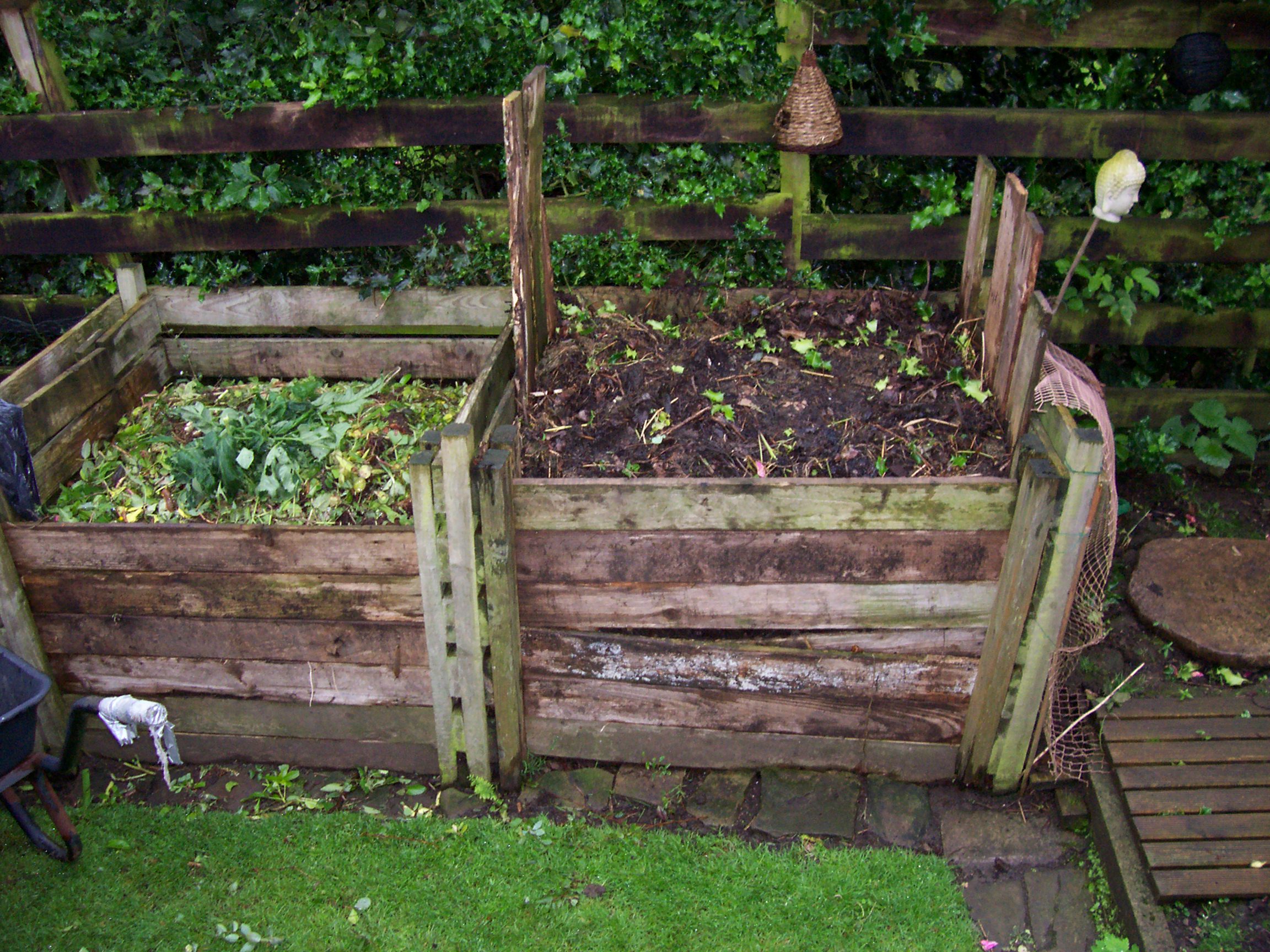
Make some kind of container about 3’ in diameter, such as a length of chicken wire or 4 pallets hitched together to make a square. Put a layer of sticks on the bottom, just thrown in to allow air to flow into the pile. Add a variety of plant material, in layers if you can, but it’s not really necessary. You need some brown material, such as leaves, and some green material, like freshly pulled weeds, grass clippings or kitchen scraps. Top with a few handfuls of manure, if you have it, or half-done compost. This isn’t necessary, but speeds up the process. Sprinkle with water so the pile feels like a damp sponge. Don’t soak it, it needs air. The pile should heat up. When it stops, turn it. A compost aerator makes turning the pile an easy matter, so I do it more often, but you can also use a shovel or garden fork. Having two compost piles makes it easier to use the finished compost, since one can be allowed to finish while you’re adding to the other. Use the finished compost on your garden. Even if it’s not be finely screened compost, it will finish decomposing in the soil.
FAQ #15: Should I mulch my flower beds?
How much time do you want to spend weeding? If you love to weed as I do, you don’t need to mulch. However, mulching will save 80% of weeding time, so most people are happier with a mulched garden. Use a fairly thin layer (2-3 inches) and put a thinner layer on in subsequent years. Mulching also conserves water. Make sure the soil is moist before mulching because the mulch sometimes inhibits moisture from getting to the roots.
FAQ #14: How can I keep my garden looking good without spending all my time weeding?
First of all, gardens need some maintenance, so if you want a nice looking garden, you will need to commit some time to caring for it. Bark or straw mulch helps to keep down weeds and makes those that do grow easier to pull up. One good way is to edge with a shovel then use a hand cultivator to pull away the grass that is “cut off”. Edging makes weeding easier and makes the garden look really nice when you are done. When pressed for time, I edge, then weed in about 12 to 18 inches. If your garden is full, the weeds in the middle won’t even show and you give an impression of a well-maintained space. Planting ground covers such as mosses, alyssum, and vinca will reduce the space that weeds can take over. You can check out a video on edging with a shovel here.



